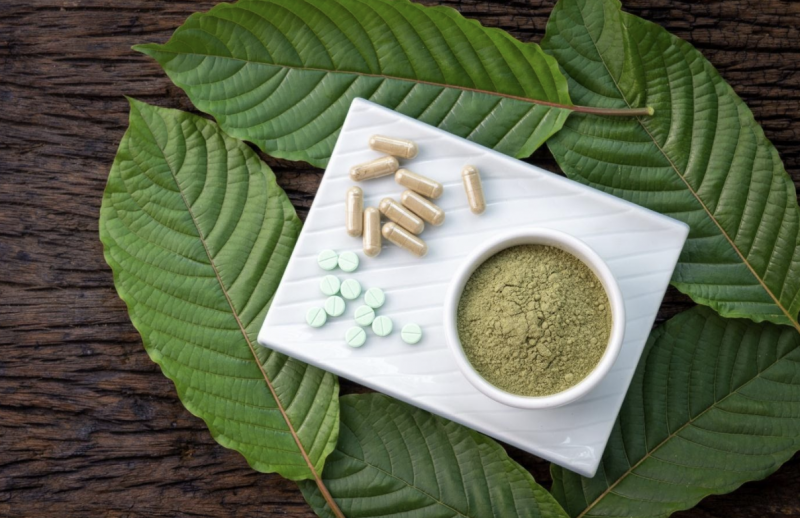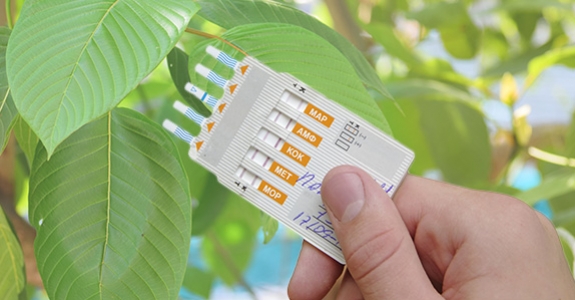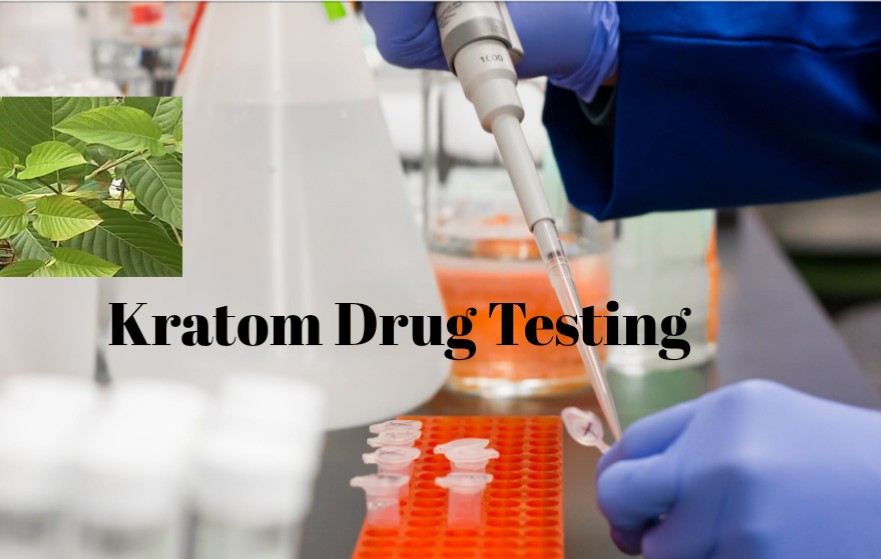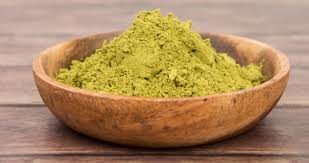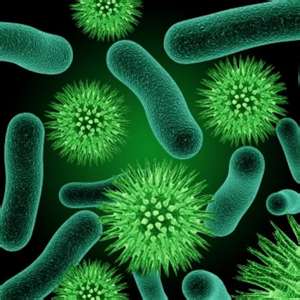Many use kratom to quit opioids; others just wish to get high. There is a push to govern the plant-derived medication –but experts disagree about its safety.
BY HER MID-20S, Faith Day was out of jail but homeless. She was also addicted to some substance now overly legally undermining to mention. When she attempted to quit, she could not afford the medication to control the withdrawal symptoms. She seemed to the web for answers. News about a plant known as kratom kept popping up in her social networking feeds, alongside claims that consuming it will help her break free of dependence. Desperate, she utilized her past $140–money that could have otherwise gone to the destructive medication –on an ounce she discovered at a head shop.
Two weeks later, she was off the drug. She has not relapsed since. Now, Day devotes her life and career to kratom. She is no back-alley pusher–her goal is to get kratom from head shops, gas stations, and shadowy street corners and in the secure, legal light of day.
From some scientists’ count, there are between 10 million and 15 million kratom consumers in the united states alone. They’re using the drug for everything from chronic pain relief to substitute for their morning java. It’s not an illegal material; unless you live in one of those six nations where kratom possession is criminalized, or are a part of the US Army or Navy, which also prohibited the drug, kratom capsules, extracts, and teas are legal to purchase and sell. But after locating the atom in the systems of heaps of people who have died of drug overdoses, the federal government has been considering an entire ban. It warns users of potential opioid-like effects, though scientists have challenged the FDA’s methodology in coming to that decision. Some individuals, such as Day, will inform you kratom spared their lives. Others inquire if she is selling “legal rebellion”

Day’s is one of only two atom businesses licensed by the Department of Agriculture from the entire country. If you ignored the signal, her Oregon storefront, sterile Kratom Portland, can be a coffee shop or a cool marijuana dispensary. The air is hot and sweet with incense, the walls bright white and pale green, the plants plentiful, the bar wood, and the binders of laboratory tests numerous. Day approached me at the door, along with a giant, lush husky named Max. She’s wearing a very long cardigan along with a cautious smile. Every visible expanse of the epidermis is tattooed–hands, chest, neck, face. As they travel upward, the ornaments turn from birds and dots into the structural formulas of chemical substances found in kratom. The arc of hexagons above her left eyebrow is speciogynine, considered to be a smooth muscle relaxer. She credits it with stopping awful withdrawal convulsions.
The day began her kratom business in Denver, and she is in Portland for one reason only: Google Trends. Of all the people in the US, it’s Portlanders who hunt for kratom the maximum per capita. It is hard to say why that may be the reason people give for using kratom vary broadly. It’s equally fruitless to attempt to stereotype an average American kratom user. Many are attempting to quit opioids or alcohol. Others are attempting to manage chronic pain, enhance their eyesight, clean up their skin, boost their immune system, or simply have fun and get high. “A third of our clientele are looking for a caffeine-free alternate to get them through their day,” Day says. “I’m speaking soccer moms.”
The image of rich moms slurping kratom tea instead of a walnut, or trendy Bay Area residents popping kratom pills socially just because of its mild, mellow body high, cuts strangely against the dire tone of the majority of authorities report on kratom. The US Food and Drug Administration warns customers to prevent kratom, noting that it appears to affect”the same opioid brain receptors as morphine” and may include the very same risks of dependence. The CDC has reported 91 kratom-involved overdose deaths and discovered that the medication at the methods of 61 other overdose deaths.
There was a reason kratom was so current in Day’s social feeds in 2016: The DEA had only stated its aim to ban kratom and reclassify it as a Schedule 1 drug. Then it reversed the decision following a prolonged outcry from the public and the scientific community. “I really don’t think that has ever happened before,” states Marc Swogger, that studies the therapeutic use of medication at the University of Rochester Medical Center. “I think they did not do some study about the number of people who were using this plant and what they had been using it and they had been surprised at the response.” The day is not surprised when folks are amazed by kratom. The plant is surrounded by so much misinformation that it is often hard to distinguish fact from flackery or fearmongering.
Just about the only thing everyone agrees on is that kratom is a plant, a tropical evergreen shrub that grows wild in Malaysia, Thailand, Indonesia, Myanmar, and Papua New Guinea. It is a relative of the coffee tree. In its native selection, it’s been used for centuries (at least) as an herbal remedy, especially among day laborers who would chew the leaves for a mild stimulant effect. At the end of a hard day’s work, individuals may then boil the leaves into a tea, extracting different compounds purported to have a calming and pain-relieving effect.
It is still used that way in Southeast Asia. According to Darshan Singh, a researcher at the University of Science, Malaysia’s Center for Drug Research, modern Malaysian kratom users fall into four groups: older folks practicing conventional medicine, manual laborers, people trying to get off opioids, and people using kratom in lieu of other illicit drugs, occasionally mixed with cough syrup. (He notes that all categories do often share sex. “Due to social discrimination,” he states, “kratom use one of the females is not widespread.” So far, there haven’t been any kratom-linked deaths in Malaysia, despite its long history and ubiquity. “It’s seen that kratom use has become [more of] a significant issue in the US than in its own local context in Southeast Asia,” Singh says. Back in Thailand, kratom is on the edge of total legalization.
Southeast Asia is a long way from Portland, and it took kratom a long time to arrive. Kratom was described by a Dutch colonial botanist in 1839, but according to Oliver Grundmann, who studies the effects of herbal products on the central nervous system at the University of Florida, interest in the US and Europe did not become widespread until the mid-2000s and 2010s. (even though it’s difficult to draw causal links, that do approximately correlate to the growth of the opioid outbreak).
Most of what Grundmann knows about today’s American kratom usage has come from online polls. He acknowledges that there are biases inherent in that sort of self-reported research, but outside of head shops and Portland convenience stores declaring”Kratom Sold Here,” online is where diatom civilization resides. It’s where Day marketed her products when she first got started. It was the scene of this drug’s biggest scandal. Last year, a seller at Michigan has been made to forfeit $1 million he’d made hawking kratom on the web because he had been asserting it cured medical conditions like Lyme disease. Facebook is home to dozens of committed kratom classes; there are several atom subreddits. Kratom supplements, much like CBD, are becoming often marketed merchandise in the Instagram economy, especially among fitness influencers claiming it assists with recovery after tough workouts. As soon as you scroll past a few scary posts from the DEA, FDA, and the Mayo Clinic, kratom’s online existence is somewhat smart.
With digitization comes anonymity. Even after careful analysis, neither Grundmann nor Swogger can generalize about who in America is shooting kratom. In 2016, after running an online survey of over 8,000 men and women in the US, Grundmann found few trends in age, income, or sex –kratom cuts straight through the middle of society. He did discover that about two-thirds of kratom users were using the medication to treat chronic and severe pain or psychological and psychological disorders like depression and anxiety. Only a minority were utilizing it to mitigate withdrawal symptoms or using it recreationally, and recreational users tended to prefer other illegal drugs over kratom–that the plant gets you high, but maybe not that high.
So, are these some 15 million Americans utilizing the opioid-adjacent killer the DEA fears? Grundmann sees the fact that a highly purified, injectable form of the atom does not exist as evidence that the DEA might have overstated its similarity to opiates: “In case of kratom were really so powerful, why not we see anything like that, despite using a sophisticated underground machine that could easily come up with extraction techniques if they wanted to?” Grundmann says. “Instead, we view fentanyl and its derivatives contributing to the opioid crisis.” Swogger concurs, as do many other scientists. The compounds in kratom call for a fantastic deal of additional study to ascertain what exact effects they do have, but while some bind to the exact same compound receptors as opioids, they do so quite differently. Kratom is tripping the same portion of your mind’s reward system, but in a way that is (perhaps, hypothetically) less addictive. “When tens of thousands of people say they’re using kratom, and it’s assisting them with conditions which are really tricky to help people with, we must listen,” Swogger says. “I am not convinced that a single death has been the result of kratom.”

Thing is, people are dying, and that’s not even the only reason to take issue with kratom’s climbing trendiness. The likeliest reason for the fatalities, Day thinks, is less kratom compared to materials being used to adulterate it. Soon after she started posting on her own experiences with kratom on the internet, a man who conducted a head shop in Colorado began messaging her, and they became romantically involved. “It turned out to be a terrible position,” she states. “I got trapped inside of an apartment for six months and didn’t have anything else to do but work with him and watch this individual making assloads of money selling atom in a very inappropriate manner.”
Some sellers include just about anything to atom: potato starch, matcha, flour. Others don’t pay much attention to what’s already inside. Day has seen kratom sold clumpy with mold and grime. “Someone expired at his shop,” Day says of her ex. “So, from this traumatic experience, I realized that I did not wish to become homeless anymore and maybe I could earn a company for myself doing the right way.” She called labs every day until they started analyzing kratom for contaminates. Now she takes pride in offering customers proof that her goods are tested. It has also earned her many enemies. Just because kratom civilization is stretching toward the mainstream does not mean it can’t also become horrible when someone threatens the status quo: “I’ve been very vocal that I think atom ought to be regulated like marijuana,” Day says. “So much so that… I’ve gotten death threats from kratom users on the internet. There is a whole lot of wild stuff on the internet. I try not to concentrate on it”
Even if there are no contaminants from the kratom you’re ingesting, the manner in which it is sold gifts other dangers. That guy who got busted for claiming that kratom cured Lyme disease? He is not alone. “We have done mystery shopping, and some of the interactions I’ve had are simply mad. I wanted to leap across the counter,” Day recalls. “One guy said it will help you get high like morphine. Still, another said it would cure cancer.” To be clear, it does not. Some preliminary studies have suggested certain substances found in kratom may have possible anticancer effects. Even if that is correct, at this point it’d be a bit like stating blueberries heal cancer because they are high in antioxidants.
Like most high-value crops (especially semi-illicit ones), the kratom industry is also built on frequently exploitative labor practices, mostly in remote, rural regions in Indonesia. According to Day, who sheds her kratom by the country, Indonesia’s drug enforcement agency, the BNN, has been under pressure by the US to ban kratom production by 2022, imperiling the kratom farmers’ livelihoods.
So the DEA and FDA’s worries are not unwarranted. “They are concerned about any material they have very little control over that patients and consumers are utilizing to self-treat medical conditions,” that the University of Florida’s Grundmann says. “When you discuss depression, withdrawal, anxiety–that usually goes in the hands of a health professional.” Few appear to consider that calls for a ban, however. “If we completely cut off any legal way for those users to acquire kratom then we don’t have some oversight “
Instead, it might be more useful to consider exactly what kratom’s widespread use says about where our culture around drugs and medicine is now. “Many kratom users I have talked to do not feel comfortable interacting with physicians, and that’s to their own detriment,” the University of Rochester’s Swogger says. “But we can not pretend like the medicines we are providing are getting to everybody. They’re not.” While not everybody who chooses a kratom supplement has a story as dramatic as Day’s–out of displaced substance abuser to business owner and mother–it is clearly fulfilling a demand for huge numbers of individuals. The need to govern, but not ban, kratom use is already being acknowledged on the state level: The Kratom Consumer Protection Act was passed in Arizona, Georgia, and Utah, and is pending in Oregon.
“When it was as dangerous as the media says, I don’t think that would be happening. Nobody’s passing a heroin consumer protection bill,” Day adds. “It’s just bizarre.” You probably know how Portland feels about bizarre. The place plans on maintaining it.
